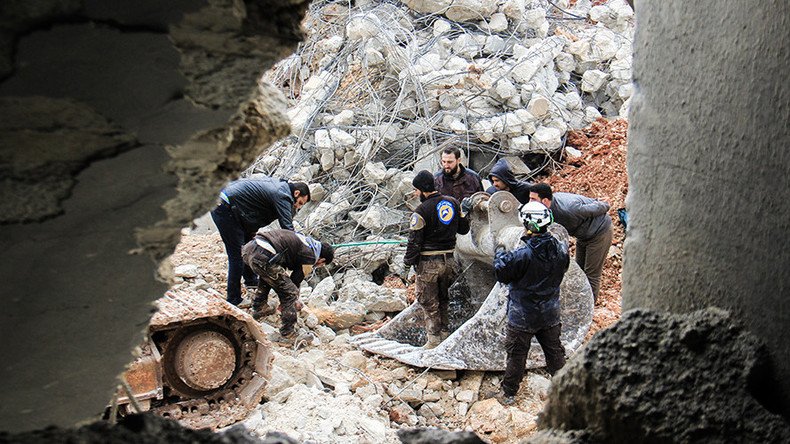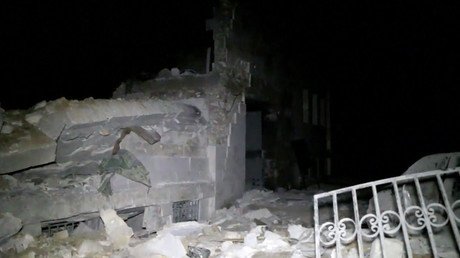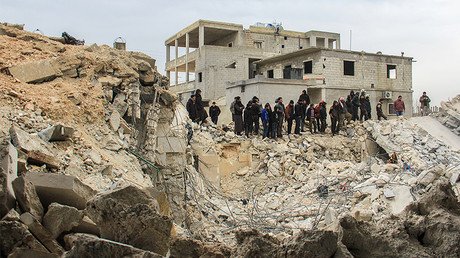Pentagon finally ‘admits’ US jets bombed mosque with civilians in Syria

The Pentagon has reportedly acknowledged that a US airstrike destroyed a mosque in Syria’s Aleppo province in March, a CNN report says. The US had insisted that it targeted a terrorist meeting and claimed the mosque was intact, despite video evidence.
An internal investigation carried out by US Central Command (CENTCOM) in the wake of the deadly airstrike on the Al-Jinah Mosque concluded that it was accidentally targeted in what was supposed to be a strike on a meeting of senior Al-Qaeda members, CNN reports, citing two US defense officials.
While photos and videos showed the disastrous aftermath of the strike – which reportedly claimed the lives of over 40 people – emerged almost immediately after the attack on March 16, the US military failed to accept responsibility until now.
The officials told CNN that the building, earlier identified as a partially-built community hall, was in fact part of a “mosque complex.” The probe launched by the Pentagon into the circumstances of the strike – after images of bodies and debris that started circulating on social media challenged their version of events – found that the building had been used as a place of worship in the past.
Another official speaking to CNN said that the building was primarily used as a religious institution.
The sources say that the US command genuinely believed that Al-Qaeda militants were holing up in the building at the time of the attack. It is unknown if the complex had ever been on the list of civilian structures that are banned from attacking.
Following the attack, Colonel John J. Thomas, spokesman for US Central Command, claimed that “We did not target a mosque, but the building that we did target – which was where the meeting took place – is about 50 feet from a mosque that is still standing.”
A recent report by Human Rights Watch (HRW), based on witness accounts, says that the mosque had been used daily and saw dozens of people gathering inside during prayer calls.
“Aerial surveillance of the building would have shown this,” the report said, accusing US forces of failing to double check the facts on the ground before launching what turned out to be an attack on civilians who were flocking to the site for evening prayers.
“The airstrike took place in between the sunset and the evening prayer, at a time when US officials should have known that there would be people gathering in the mosque,” deputy director of HRW’s Middle East and North Africa division, Lama Fakih, told RT in April.
HRW did not find any evidence that would have backed up the claim that an Al-Qaeda meeting was being held there.
Such negligence in identifying the target “raises the question whether officers were criminally reckless in authorizing the attack,” the report says.
In the immediate aftermath of the attack, some news outlets rushed to pin the blame for the reported death of civilians on Moscow or Damascus.
READ MORE: Russia urges US comment on reports of fatal Syria mosque strike
However, after troves of evidence emerged which indicated the culpability of the US – including a photo allegedly showing a fragment of an air-to-surface AGM-114 Hellfire missile from the site – Moscow urged Washington to comment.
“Unlike some of our opponents, we are not going to blame them for ‘intentional killing of civilians and destruction of infrastructure,’” Russian Foreign Ministry spokesperson Maria Zakharova said at the time, adding that she was sure the US warplanes had been aiming at terrorists during the ill-fated sortie.














